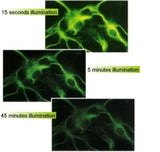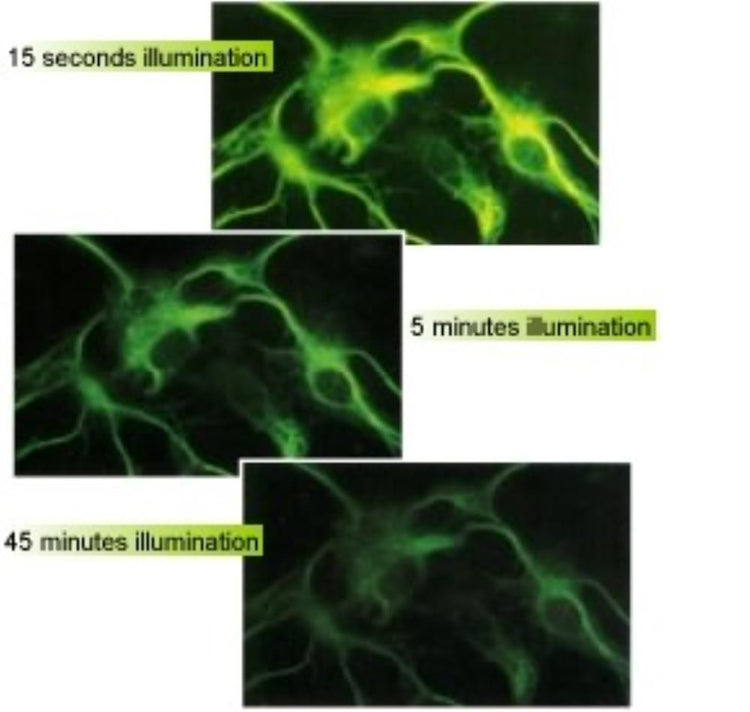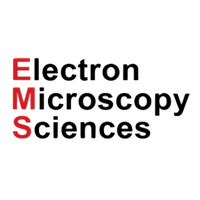Citifluor CFPVOH
Anti-fadent Solutions reduce the photo-bleaching or fading of the fluorescence of dyes used for labelling biological species. The fading of fluorochrome dyes is a particular problem in fluorescence microscopy, such as in immunofluorescence studies. Fluorescent dyes are also used as cell markers, for following the uptake and release of calcium from cells for example, and for characterising cell surfaces. For work at high magnification, a non-fluorescent immersion oil is available.
In fluorescence microscopy, the fluorescence is stimulated by high intensity UV or visible light. Absorption of the light populates an excited state of the dye (usually a single state) and this leads to fluorescence. However, the excited state of the dye may undergo chemical reactions which leads to its destruction as evidenced by the fading or bleaching of the fluorescence and consequent loss of the image or in the case of assays, a change in signal intensity during measurement.
To overcome these problems, use anti-fadent (anti-bleaching) solutions as mounting media when specimens are examined by fluorescent microscopy or other detection systems and as additives for assays.
Choosing the Best Anti-fadent
These are the critical decision factors which will help you select the most appropriate mountant:
- Do you need a Hardening or a Non Hardening medium?
- If your system is Glycerol tolerant than choose a Glycerol Based product, if not then use a Glycerol Free solution
- These high refractive index mountant solutions are to be used where you wish to obviate the effects of spherical aberration (caused by a mismatch between the refractive index of the glass of the coverslip and the mountant medium) which leads to a loss of resolution of your images
** Store at room temperature
See Technical Data on the use of Citifluor anti-fadent
Non-Hardening Mountants
Glycerol Based
- AF1 - Safety Data Sheet - AF1
- AF1
- AF2 - Safety Data Sheet - AF2
- AF4
High Refractive Index Glycerol Based Solutions
- CFM-1 - Safety Data Sheet - CFM-1
- CFM-1 plus AF - Safety Data Sheet - CFM-1+AF
- CFM-2 - Safety Data Sheet - CFM-2
- CFM-3 - Safety Data Sheet - CFM-3
- CFMR2 - Safety Data Sheet - CFMR2
Glycerol Free
- AF3 - Safety Data Sheet - AF3
- CFPVOH
- AF100 - Safety Data Sheet - AF100
- AFR3 - Safety Data Sheet - AFR3
High Refractive Index Glycerol Free Solutions
AF87 - Safety Data Sheet - AF87
Guide to Hardening Mountants
Glycerol Based
- AF200 - Safety Data Sheet - AF200
- AF300 - Safety Data Sheet - AF300
Film Forming Polymer Solutions
- Tris-MWL 4-88 - Safety Data Sheet - MWL4-88
- CFPVOH - Safety Data Sheet
Glycerol Free
- PVP plus anti-fadent - Safey Data Sheet - PVP-1
- CFPVOH plus anti-fadent
Film Forming Polymer Solutions
- CFPVOH - Safety Data Sheet




